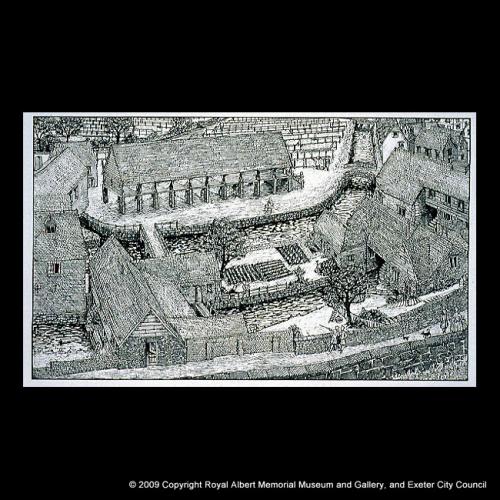Reconstruction view of Cricklepit Mill in the 1750s
Back to Time Period
The view, drawn by Richard Parker of Exeter Archaeology, shows the appearance of the industrial area around Cricklepit Mill as it would have appeared in the 1750s. It looks down from within the walled city; the City Wall is at the bottom right, leats (water channels) flow across this low-lying area; the most important was Higher Leat, which drove the waterwheels of Cricklepit Mill (right) and Lower Mills (left).
Cricklepit Mill was a cornmill, but attached to the back of it, in a lean-to structure, were fulling stocks used for pounding cloth, one of the processes in cloth finishing. After fulling, cloths were stretched out to dry, either in the Dryhouse, the long open-sided structure at the top of the view, or on the open racks (top of view).
Acknowledgments: R. Parker, Exeter Archaeology



















